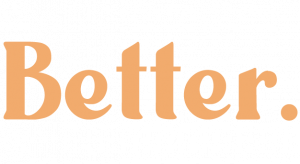Schema therapy is a form of therapy that can benefit people who suffer from Borderline Personality Disorder (BPD), self-harming behaviors, eating disorders, and substance abuse.
People with these conditions sometimes think they are unworthy of happiness, love, or success in life because of their past experiences. They may blame themselves for things that go wrong in their lives, feel misunderstood by others, and keep away from reaching new relationships.
Schema therapists treat these emotional issues with techniques that involve the patterns of thinking, feeling, and behaving people develop during their childhood years.
According to an article published on WebMD, schema therapy was created by Dr. Jeff Young , who found “at least six separate types of schemas” which he later combined into three main categories: abandonment/instability; lack of autonomy; defectiveness/shame . People can have one or more schemas in each category.
This is how the three categories look like (from Loyola University):
Schema therapists believe that people can benefit from overcoming these negative emotions by recognizing their own beliefs about themselves and dealing with them using specific techniques.
Schema therapy is similar to cognitive behavioral therapy, but it focuses more on how people’s early life experiences influence their current lives. According to the article in WebMD, the techniques used by schema therapists are also very similar to those used by other forms of psychotherapy.
What Is Schema Therapy?
According to Dr. Jeff Young, schema therapy “uses mindfulness strategies and emotion-regulation skills that help patients get unstuck from repetitive negative cycles.”
It can be described as a goal-directed form of psychotherapy that helps people get rid of destructive patterns both emotionally and behaviorally. This form of therapy has three main components: 1) psychoeducation; 2) experiential work; 3) strategic/solution-focused coaching.
Schema therapy is not a quick-fix approach to mental problems. It can take anywhere from 6 months to 2 years for people suffering from severe issues, according to the journal Psychiatric Times.
Theory Of Schema Therapy
According to schema therapy theory, there are three main components of emotions: thoughts, feelings, and behaviors. People have certain beliefs about themselves that keep them stuck in negative emotions even when their lives are going well. These emotional patterns can be summarized using what Young calls “the ABCD’s of emotional schemas”. They are: 1) Activating Events ; 2) Beliefs ; 3) Consequences ; 4) Disputing .
An activating event is something that happens during a person’s lifetime which shapes his or her beliefs about what it means to be a “good” person. For instance, someone who has been abandoned by his parents might think that he is unworthy of love and happiness all his life.
When such an event happens during childhood, the child’s mind stores this belief as an emotional pattern that can affect how he or she feels and behaves later in life. Over time, these negative emotions become part of the person’s character and start to affect their lives badly – this is called “Schema maintenance”.
Once people suffer from these emotional patterns for years, they may seek emotional soothing through self-destructive behaviors such as substance abuse and other addictive habits. They might also feel depressed and suffer from identity problems. Sometimes they could develop personality disorders, which can be very difficult to treat.
Here is how Young explains the difference between schema mode and healthy mode.
Schema therapists try to help patients change their schema mode into healthy mode by using different techniques such as mindfulness practices, self-regulation skills, communication tools, etc. They also help people understand themselves better so they can gradually change their lives for the better.
What Is Mindfulness?
Mindfulness is a practice of paying attention to one’s sensations (such as feelings), thoughts, and surroundings with curiosity and non-judgmental observation. It helps people live in the present moment without judging it or obsessing about past events or future concerns. It often involves meditation techniques yoga or tai chi.
Schema therapists recommend that their patients practice mindfulness on a daily basis to become aware of their negative thinking patterns and emotions. They can then change their thoughts and behaviors accordingly.
How Does Schema Therapy Work?
People who suffer from mental problems such as anxiety or depression often rely on a combination of psychotherapy sessions with medication to cope with their symptoms. In some cases, they could also benefit from family counseling.
In schema therapy, cognitive behavioral therapy is used to treat the individual’s most severe symptoms before tackling the deeper issues involved in his or her emotional patterns. Once habits have been changed at a surface level, the therapist helps individuals focus on how these negative thought processes are formed by exploring their past experiences.
According to WebMD magazine, people should be prepared to work on their issues for months or even years before they notice a difference. It is also important to seek help from a mental health professional because schema therapy can be dangerous if practiced incorrectly.
Schema therapists spend the first few sessions trying to understand how their patients could have developed their negative thought patterns, as well as helping them recognize when these patterns appear in similar situations during daily life. Schema therapists believe that once people learn to identify and avoid dangerous situations – such as walking down a dark alley alone at night – they can improve their ability to handle tough times. Mindfulness skills could come in handy during this process because it helps individuals become aware of what happens around them without being emotionally overwhelmed by past memories or future anxieties. Schema therapy offers
Schema therapy model
Initial states are the underlying beliefs that lead to the creation of schemas. These beliefs can be conscious or unconscious and may include words or images. Often they are communicated through wordless feelings, with which people tend to have negative associations. There is no exact number of initial states believed to exist, but Young cites five as being particularly significant: abandonment, mistrust/abuse, emotional deprivation, defectiveness, and subjugation.
Initial states are often related to traumatic events in childhood—such as separation from one’s caretakers—but trauma alone does not account for the development of a schema. As people grow older their initial state comes into conflict with reality; they may feel misunderstood and begin to overreact. This, in turn, results in the development of a schema:
Core beliefs are established as a result of negative experiences with other people. As such they typically develop during childhood and continue throughout adulthood. Core beliefs often stem from perceived inadequacies—such as being unloved or unworthy—or fears that an individual will be abandoned or abused by those close to them. Some of the most common core beliefs include:
Schemas form as a result of core beliefs; they can be seen as modes of coping with these early emotional injuries. Schemas evolved as the brain grew more complex; there is no single root cause for their formation but instead multiple factors which coalesced into schemas over evolutionary time. As Young describes, schemas are like programs written in the mind; they work for people for years until they become ineffective or even harmful.
Schemas develop between infancy and early adulthood as a product of their initial states. People often experience them as young children—when their parents do not meet all their needs—but it is not until adolescence that they act on these feelings. Schemas may be suppressed by focusing on other things, but this can lead to chronic anxiety or depression due to the lack of resolution about one’s negative thoughts and emotions. This suppression also stunts emotional intelligence development since schema-driven thinking replaces rational thought with unproductive patterns of thought over time , leading to an inability to connect with others emotionally .
Maintenance cycles perpetuate schemas, largely through the processes of selective attention and distorted cognitive processing. Although they can be broken by changing negative thought patterns and behavior, this does not always work because schema-driven reactions remain unconscious and come out in ways people cannot predict. Young writes: “Once a schema has been activated via selective attention, it colors our perception of new information that becomes consistent with the schema’s expectations.” This often leads to faulty memories about what actually happened, as well as an inability to feel empathy for others .
Schema-focused therapy is based on DBT and uses similar skills such as mindfulness and distress tolerance techniques. The main difference between CBT and Schema-Focused Therapy is that BSFT focuses on early maladaptive schemas that are the root of the patient’s suffering while CBT focuses on cognitive distortions.
Schema-focused therapy uses a two step approach to treatment. During the initial phase, which lasts about eight weeks, patients find out what schema modes they have and work with them in session by doing exercises designed to change negative thoughts into positive ones. These exercises include mindfulness, reframing, role play/behavior rehearsal, dialogue between different parts of oneself (parts work), and imagery rescripting. Patients also learn how to break up schema modes when they appear outside of therapy sessions.
Schema therapy approaches to therapy in stages: pre-treatment stage followed by an action stage which deals with changing maladaptive behaviors including self-sabotaging behaviors, and finally, a consolidation stage.
As for the action stage, it is divided into six modules: 1) Grasping and understanding the patient’s psyche and early maladaptive schema modes; 2) Gaining and maintaining awareness of internal experience; 3) Attuning to internal experience by regulating one’s own emotions and allowing oneself to be vulnerable; 4) Cultivating positive change in oneself by transforming longstanding patterns of perception and relating toward oneself, others, and one’s life (a form of dialectical behavioral therapy); 5) Developing complex emotional skills required to relate well with others; 6) Preparing for termination, which coincides with the consolidation phase. The consolidation phase helps patients maintain their progress after leaving treatment since many schemas can reemerge even after years of treatment. This stage also helps patients deal with relapse and determine the starting points for future therapy.
Schema-focused therapy can be done in individual sessions, but it is often used in conjunction with schema mode workbooks (printed worksheets that patients complete on their own) or schema diary cards (cards that patients write about schemas and how they acted on them). Patients also meet weekly for two to four months: one group meeting and one individual session devoted specifically to combating specific early maladaptive schemas. Once a month, during the last half hour of these meetings, clinicians focus on termination planning. These meetings are called consolidation sessions.
In terms of effectiveness, because much research has been conducted using this therapy in clinical settings, it has been shown to be effective when treating borderline personality disorder. In a study conducted by Kluft & Fine, BSFT was used with 28 patients who were diagnosed with either BPD or antisocial personality disorder. At the end of treatment, their symptoms had significantly decreased and at a follow-up period of a year later, they were still making significant progress.
Schema therapy is also an evidence-based practice that is supported by research from multiple studies. For example, in one study examining women with eating disorders, schema mode workbooks were found to help these women identify maladaptive thinking patterns and reduce the frequency of bingeing and purging behaviors over time. Other studies have found similar effects among patients who struggle with borderline personality disorder, eating disorders, and depression.
Schema-focused therapy also addresses the root of the patient’s suffering while CBT focuses on cognitive distortions. Cognitive restructuring is used in schema mode workbooks to change negative thoughts into positive ones (called “healthy adult mode thoughts”) which help patients deal with deep-seated schemas that can be hard to overcome. These healthy adult mode thoughts are also used during consolidation sessions to reorient how patients think about themselves, others, and their lives.
Schema therapy provides an alternative framework for psychotherapy since its processes aim at understanding the unconscious mind and working through a patient’s early maladaptive schemas rather than just focusing on current symptoms.
Early maladaptive schemas and cognitive therapy.
Early maladaptive schemas are generally formed during childhood and then manifest themselves as core beliefs that guide the patient’s behavior. Cognitive therapy (CT) focuses on identifying thoughts, emotions, and behaviors that are based on faulty perceptions of oneself or others. CT often leads to “cognitive restructuring” which helps patients recognize how irrational thoughts lead to dysfunctional feelings. certain coping styles such as maladaptive coping styles are used in assessing patients. painful and overwhelming emotions trigger one to resort to problematic coping methods that are not advised by mental health professionals. people with mental health conditions also have other personality disorders in most cases therefore, the therapy relationship between a schema therapist and the patients should always be maintained. An experienced schema therapist will study the behavior patterns especially negative patterns so that they use it to treat and prevent emotional stress.
There are five schema domains :
-self-schema (feelings of worthlessness)
-others schema (mistrust and animosity towards others)
-life events schema (extreme reactions to common problems in life)
-pathological temperaments (perfectionism and unrelenting standards syndrome).
-Reinforce schemas
Schema mode workbooks.
After patients are evaluated, schema mode workbooks are used to help them understand the roots of their schemas. This is necessary because schemas are activated whenever one encounters situations that are difficult to cope with. Activation of these maladaptive schemas then triggers dysfunctional thinking patterns which lead to impaired emotions. Unmet emotional needs are one of the issues that is handled in abandonment schema, as therapists strive to prevent emotional distress and establish a strong sense of self-control. Integrative approach to symptom reduction and doing away with dysfunctional coping modes especially during therapy is to get past the basic emotional attachments just as the traditional therapy methods handle people with emotional needs. people with self-defeating patterns are recommended for gestalt therapy where they get rid of unhelpful patterns and other person’s schemas. According to attachment theory, the empathic confrontation of any overwhelming emotions experienced can be successfully treated by avoiding the basic emotional needs. A good schema pattern is one that offers a systematic review of the ways to get emotional inhibition and help forge healthy relationships.
the international society of behavior therapy provides a practitioner’s guide and how to establish temporary mindset for the patient seeking therapy help to favor their own needs and practice self-sacrifice. Initial evidence of impaired autonomy shows that mental health conditions and mental health concerns among people with dysfunctional parent modes are supposed to be taken for schema therapy.
Cognitive-behavioral therapy vs schema-focused therapy
Schema mode workbooks use cognitive restructuring to change negative thoughts into positive ones called “healthy adult mode thoughts.” These healthy adult mode thoughts are also used during consolidation sessions to reorient how patients think about themselves, others, and their lives. Schema-focused therapy addresses the root of the patient’s suffering by focusing on early maladaptive schemas rather than just focusing on current symptoms.
Schema therapy and borderline personality disorder (BPD)
Patients with BPD often have maladaptive schemas that create vulnerabilities such as the need for affection, dependency, and lack of self-confidence. Schema therapists work to help patients recognize when these early maladaptive schemas are activated and how they cause emotional and behavioral reactions. Once a patient recognizes this, she can then work on modifying her beliefs in order to change dysfunctional thoughts and behaviors.
Schizophrenia spectrum disorders and schema therapy
Psychotherapy has been widely used among schizophrenia spectrum disorders due to its potential benefits such as improving cognitive function which can be impaired by many psychotic symptoms such as hallucinations or delusions. Recent show that CBT along with antipsychotic medication is the most effective treatment for schizophrenia. In a Cochrane review, cognitive therapy was found to be as effective as CBT and other therapies in reducing relapse rates among those with schizophrenia.
Schema-focused psychotherapy vs schema mode workbooks
Schema mode workbooks can help patients identify maladaptive patterns of thinking and behavior that lead to low self-esteem or unhealthy relationships. Patients then learn how to cope with these emotions and behaviors by imagining challenging situations from an “adult” perspective rather than a child’s perspective which helps them develop healthier coping mechanisms such as increased assertiveness or better communication skills.
Psychodynamic therapy vs schema-focused therapy
Both psychodynamic therapy (PT) and schema-focused therapy (SFT) involve exploring the unconscious mind, transference and counter-transference, and the life experiences that influence patients’ behaviors. PT focuses on how patients perceive themselves whereas SFT focuses on early maladaptive schemas which often manifest as core beliefs that guide one’s behavior.
Schema therapy vs cognitive behavioral therapy (CBT)
Both CBT and schema therapy give therapists tools for helping their patients recognize thoughts, emotions, and behaviors that are based on faulty perceptions of oneself or others. While CBT is primarily focused on current symptoms, schema therapy addresses early maladaptive schemas which often cause patterns of dysfunctional thinking which leads to emotional distress or self-defeating behavior. Unlike CBT, schema mode workbooks provide exercises for patients to reflect on unhealthy ways of thinking and behaving.
Schema therapy vs interpersonal psychotherapy (IPT)
IPT is a type of short-term psychotherapy that focuses on interactions with family members or social relationships in order to help patients resolve interpersonal problems that cause emotional distress or self-defeating behavior. Unlike SFT, IPT usually focuses on current interpersonal concerns such as marital conflicts or divorce whereas schema therapy addresses earlier maladaptive schemas such as role confusion, mistrust, and abandonment which often enables dysfunctional patterns of thinking and behaving later in life.



